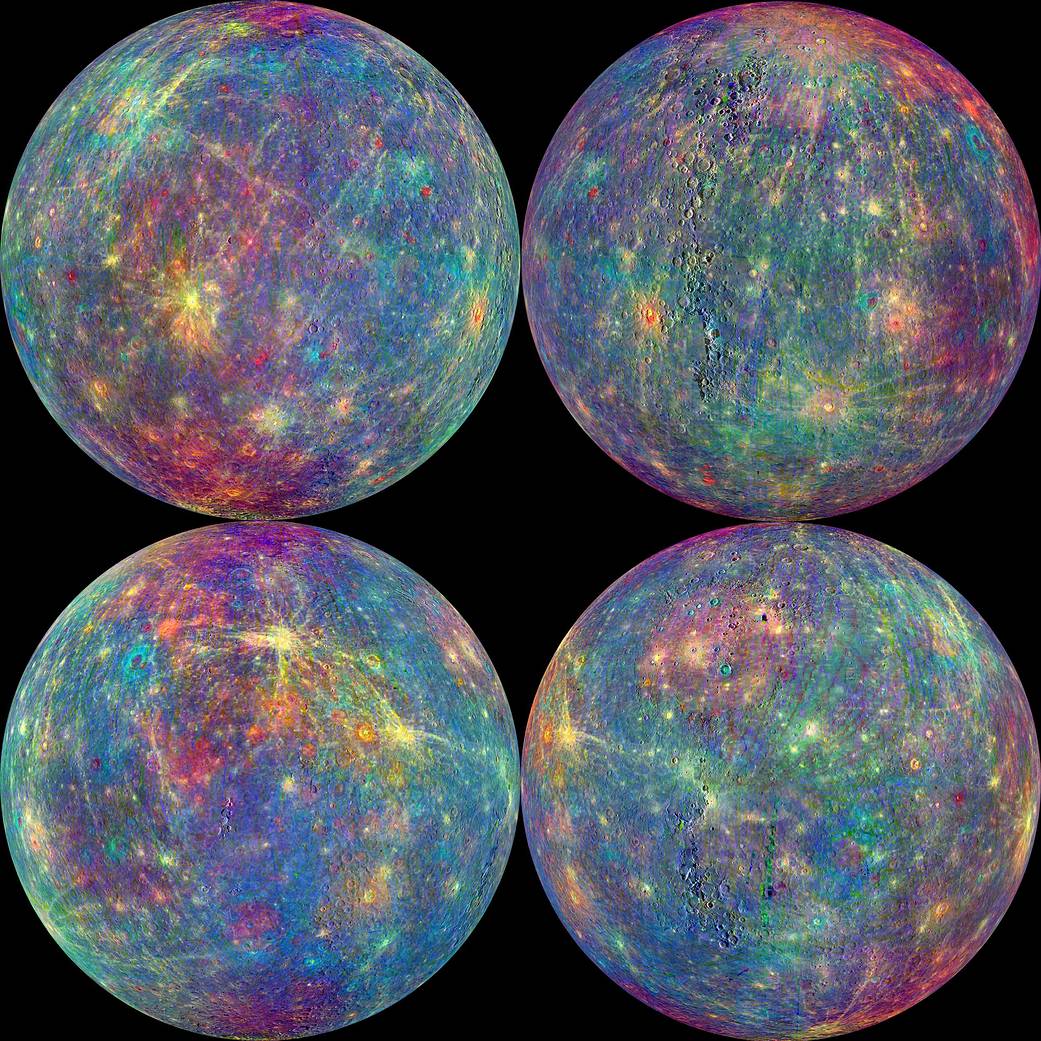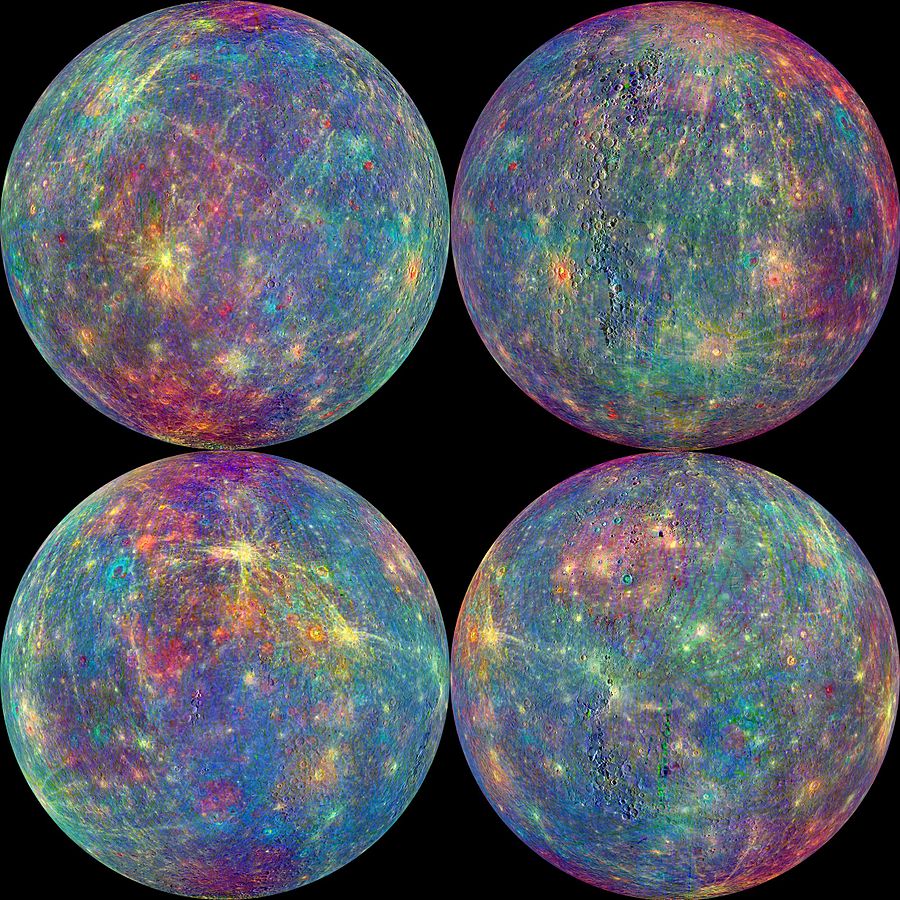Earth is a planet, while Pluto is a dwarf planet. Earth is larger and has more gravitational pull.
In our solar system, Earth and Pluto hold significant distinctions based on their size, composition, and classification. The debate over Pluto’s status as a planet or dwarf planet has sparked intriguing discussions among astronomers and space enthusiasts. The unique features of Earth, being the only known habitable planet with diverse ecosystems, stand in contrast to Pluto’s icy, desolate surface at the edge of our solar system.
Despite their differences, both Earth and Pluto offer valuable insights into the complexities and wonders of our universe. Let’s delve deeper into the characteristics and contrasting qualities of these celestial bodies to gain a better understanding of their roles in the vast expanse of space.

Credit: www.nasa.gov
Pluto’s Classification And History
Explore the intriguing journey of Pluto’s classification and delve into its historical significance in the realm of astronomy.
Discovery Of Pluto
In 1930, Pluto was discovered by astronomer Clyde Tombaugh.
Noted for its small size and distant orbit from the Sun.
Initially thought to be the ninth planet in our solar system.
Reclassification As A Dwarf Planet
Pluto’s status as a planet was reevaluated in 2006.
Reclassified as a dwarf planet by the International Astronomical Union (IAU).
Criteria for classification led to Pluto’s new designation.
Physical Characteristics Of Pluto
Surface Features
Pluto’s surface is covered in frozen nitrogen, methane, and carbon monoxide.
Atmosphere And Climate
- Pluto has a thin atmosphere primarily composed of nitrogen.
- Temperatures on Pluto can drop as low as -375 degrees Fahrenheit.
Comparative Analysis With Earth
Let’s take a closer look at how Earth and Pluto compare in terms of size, mass, and orbital characteristics. While Earth is the third planet from the sun, Pluto is a dwarf planet located in the Kuiper Belt. Despite their differences, examining these celestial bodies can provide valuable insights into the vast diversity of objects that make up our solar system.
Size And Mass
Earth ranks as the fifth largest planet in the solar system, with a diameter of about 12,742 kilometers and a mass of 5.97 × 10^24 kilograms. In contrast, Pluto is significantly smaller, with a diameter of approximately 2,376 kilometers and a mass of 1.31 × 10^22 kilograms, making it roughly 1,476 times less massive than Earth.
Orbital Characteristics
When it comes to orbital characteristics, Earth follows a near-circular path around the sun at an average distance of 149.6 million kilometers. In comparison, Pluto’s orbit is more elliptical, ranging from 4.4 billion kilometers at its closest point to 7.4 billion kilometers at its furthest. The eccentricity of Pluto’s orbit results in significant variations in temperature and sunlight exposure over the course of its 248-year orbit.

Credit: www.universetoday.com
Exploration And Missions
As humans, we have always been fascinated by the vastness of the universe and the mysteries it holds. Our quest for knowledge has led us to explore celestial bodies beyond Earth, and one such intriguing destination is Pluto. Over the years, NASA has been at the forefront of the exploration and missions to unravel the secrets of this distant dwarf planet. Let’s take a closer look at NASA’s New Horizons mission and the key discoveries and findings it has brought about.
Nasa’s New Horizons Mission
In 2006, NASA launched the New Horizons spacecraft with the sole purpose of studying Pluto and its surrounding moons in unprecedented detail. This historic mission was the first to provide close-up images and scientific observations of this distant world, which had remained largely unknown to us. The spacecraft embarked on a nine-year journey, traversing vast distances of space to reach this icy, unexplored domain.
Key Discoveries And Findings
The New Horizons mission has brought about a plethora of groundbreaking discoveries, completely transforming our understanding of Pluto and its characteristics. Here are some of the key findings that have emerged from this mission:
- Pluto is not just a cold, barren rock but a world teeming with geological activity. The spacecraft’s images revealed towering mountains, deep canyons, and even evidence of a subsurface ocean.
- One of the most astonishing discoveries was the presence of a large heart-shaped feature on Pluto’s surface, officially named Tombaugh Regio. This distinctive geographical formation captured the imagination of people worldwide.
- Despite its small size, Pluto has a remarkably complex atmosphere. The mission provided valuable data on the composition and behavior of its atmosphere, revealing the presence of nitrogen, methane, and even haze layers.
- New Horizons also shed light on the diverse nature of Pluto’s moons. It discovered an unusual binary system, with Pluto and its largest moon, Charon, locked in a gravitational dance. Additionally, it identified four smaller moons, each with its own unique characteristics.
The New Horizons mission has not only supplied us with breathtaking images and intriguing insights into the distant world of Pluto but also sparked a renewed sense of wonder and curiosity about the hidden treasures of our universe.
Debate Over Pluto’s Planetary Status
Pluto, once known as the ninth planet in our solar system, has found itself at the center of a heated debate over its planetary status. Some argue that, due to its smaller size and unique characteristics, Pluto should be classified as a dwarf planet. On the other hand, there are those who firmly believe that Pluto deserves the distinction of being a full-fledged planet.
Arguments For Planetary Classification
Supporters of Pluto’s planetary classification argue that it possesses several key characteristics that align with the traditional definition of a planet. Firstly, Pluto orbits the Sun, just like the other recognized planets such as Earth.
Secondly, Pluto has sufficient mass to maintain a nearly round shape, pulled together by its own gravity. This is a criterion often cited to differentiate planets from smaller celestial bodies.
Furthermore, Pluto has a complex and diverse geological history, with evidence of mountains, valleys, and even a thin atmosphere. These characteristics are commonly associated with terrestrial planets. By fulfilling these criteria, proponents argue that Pluto meets the qualifications to be considered a planet.
Arguments For Dwarf Planet Classification
Those advocating for Pluto’s dwarf planet classification emphasize its unique characteristics that distinguish it from the traditional planets. Firstly, Pluto’s small size is highlighted as a factor, as it is significantly smaller than the other major planets such as Earth, Jupiter, and Saturn.
Additionally, one of the main arguments for labeling Pluto as a dwarf planet is its location within the Kuiper Belt. This region of the solar system contains numerous small, icy bodies similar to Pluto. By classifying Pluto as a dwarf planet, it is seen to share more similarities with these surrounding objects.
Moreover, the International Astronomical Union (IAU) officially redefined the definition of a planet in 2006, which excluded Pluto from the list of recognized planets. This redefinition aimed to establish clearer criteria and classifications for celestial bodies in our solar system.

Credit: utopiaairport.blogspot.com
The Mysteries And Ongoing Research
The Mysteries and Ongoing Research surrounding the comparison of Earth and Pluto continue to captivate the interest of scientists and space enthusiasts worldwide. As we delve into the complexities of these celestial bodies, the Kuiper Belt and unanswered questions about Pluto offer an intriguing backdrop for ongoing exploration and investigation.
Understanding The Kuiper Belt
The Kuiper Belt, a region beyond Neptune’s orbit, contains countless icy bodies and dwarf planets, including Pluto. This vast expanse of the solar system serves as a treasure trove of information about the formation and evolution of our cosmic neighborhood. Scientists are intensively studying the Kuiper Belt to unravel its mysteries and gain insights into the origins of Pluto and similar celestial objects.
Unanswered Questions About Pluto
Pluto, once considered the ninth planet, has been the subject of numerous unanswered questions since its reclassification as a dwarf planet. Despite extensive research, essential aspects of Pluto’s composition, geological features, and atmospheric dynamics remain enigmatic. Ongoing research endeavors aim to uncover the secrets of this distant world and shed light on its peculiar characteristics, providing valuable contributions to our understanding of the solar system.
Implications For Our Understanding Of The Solar System
Implications for Our Understanding of the Solar System
Relevance To Planetary Formation
Earth and Pluto present intriguing differences in size, composition, and orbit. These contrasting features offer valuable insights into the processes that shaped our Solar System.
Insights Into Outer Solar System Dynamics
Studying Earth and Pluto illuminates the complex interactions in the outer regions of the Solar System. Their characteristics provide clues to the dynamics governing these distant realms.
The Future Of Pluto Exploration
Upcoming Missions And Studies
One exciting aspect of Pluto exploration is the prospect of upcoming missions and studies.
- NASA’s New Horizons spacecraft will continue to provide valuable data.
- Potential collaborations with international space agencies hold promise.
Potential For Future Discoveries
The potential for future discoveries on Pluto is immense.
- Uncovering new geological features could revolutionize our understanding.
- Exploring Pluto’s moons may reveal further hidden secrets.
Frequently Asked Questions For Earth Vs Pluto
Is Pluto Considered A Planet?
No, Pluto is no longer considered a planet. It was reclassified as a “dwarf planet” in 2006 by the International Astronomical Union.
How Far Is Pluto From Earth?
The distance between Earth and Pluto varies due to their elliptical orbits. On average, it is about 3. 67 billion miles (5. 91 billion kilometers) away from us.
Why Isn’t Pluto Part Of Our Solar System?
Pluto’s status as a planet was redefined because it does not meet the criteria of clearing its orbit of other debris. It shares its neighborhood with other objects in the Kuiper Belt.
What Is The Size Of Pluto Compared To Earth?
Pluto is much smaller than Earth. Its diameter is approximately 1,474 miles (2,374 kilometers), making it roughly 18% the size of our planet.
Conclusion
To sum up, while Earth and Pluto share some similarities, they are vastly different in terms of size, composition, and distance from the sun. Understanding these differences gives us greater insight into the vastness and diversity of our solar system.
By exploring and learning more about both Earth and Pluto, we continue to expand our knowledge of the universe.



